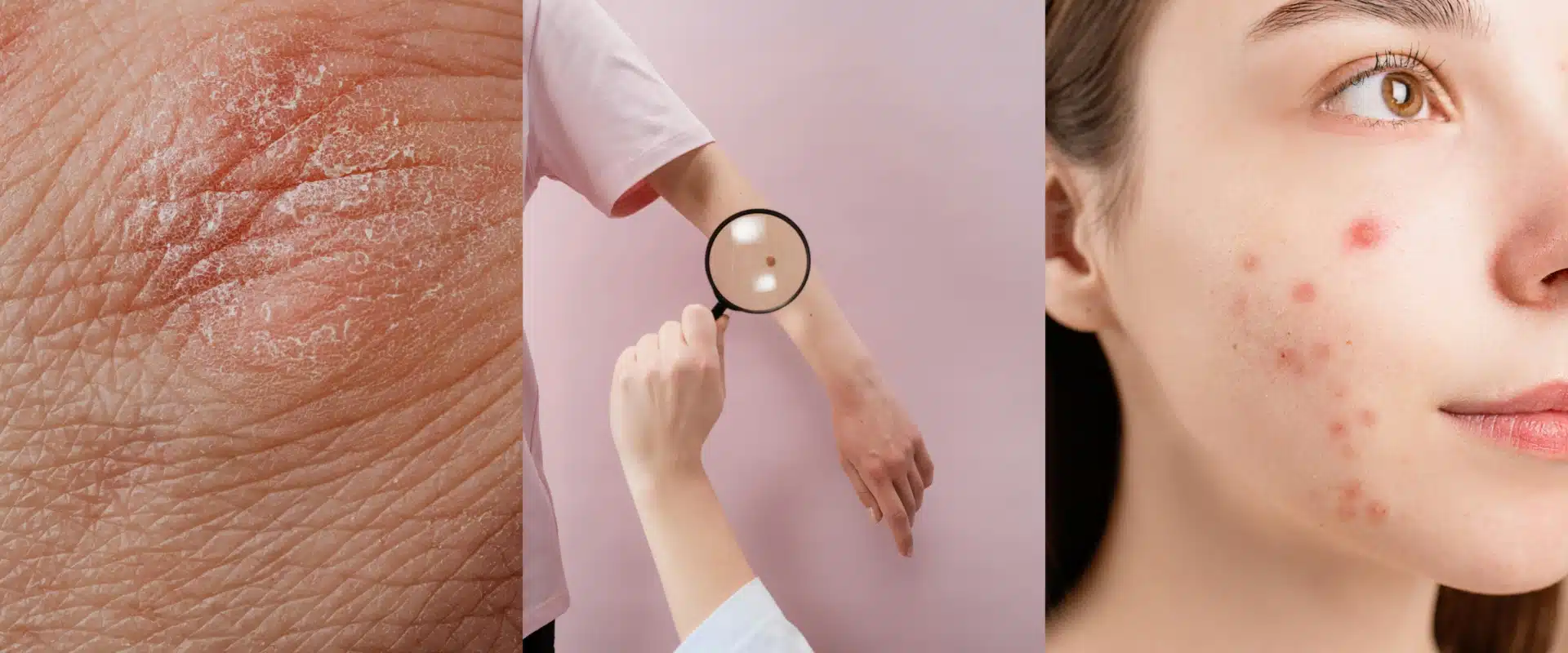Aging affects the skin significantly, leading to wrinkles, age spots, and increased susceptibility to infections. A study published in the Journal of the American Geriatrics Society found that 75.7% of adults aged 70 and older have at least one skin condition requiring treatment, with 39.1% having three or more. Nneka Comfere, a dermatologist at Mayo Clinic, advises regular skin checks and monitoring for changes. While many common skin conditions in older adults are harmful, certain changes in the skin should not be ignored and warrant urgent dermatologist visits.
Dryness & Itchiness:
Over half of older adults experience dry skin due to loss of glands, dehydration, and chronic conditions like diabetes. Due to reduced oil production, dry skin can lead to infections and inflammation, especially in those over 55. It worsens in winter and can be exacerbated by hot showers, harsh soaps, and chlorine. You
are advised to take shorter, cooler baths with moisturizing soap, use thick ointments or creams, avoid lotions, increase water intake, and use a humidifier.
Easy Bruising:
Easy bruising is common in aging individuals due to thinner skin and less cushioning fat. Persistent bruising can indicate blood clotting issues, especially in older adults with fragile skin and blood vessels. Those on blood thinners or painkillers may bruise more easily. Large unexplained bruises should prompt a doctor’s visit, as they may indicate abuse. Signs of abuse include bruises on the head, neck, or torso, which differ from typical accidental bruises on extremities.
Age Spots / Liver Spots (Lentigo Senilis):
This condition, which affects older adults and those with fair skin, presents as flat tan, brown, or black spots, mainly on sun-exposed areas. While generally harmless, differentiation from skin cancer (like lentigo maligna) is crucial. [6] Preventive measures include using sunscreen (at least SPF 30), seeking shade, and wearing protective clothing. Regular dermatologist check-ups are advised to monitor suspicious spots.
Skin Tags:
Thinning skin in seniors can lead to complications such as increased bruising, longer wound healing times, dryness, itchiness, and heightened sensitivity. The fragile blood vessels make bruising more frequent, while slower skin regeneration increases the risk of infections from chronic wounds. These issues are particularly concerning for older adults in care facilities, as they may already face other health challenges that complicate healing.
Moles (Melanocytes Naevi):
Melanocytic nevi, commonly known as moles, are small, pigmented skin spots that typically appear in childhood or adolescence but are also common in older adults. While most moles are harmless, they can occasionally become cancerous, leading to malignant melanoma. Regular monitoring is essential, and
individuals should consult a dermatologist if moles exhibit sudden growth, irregular borders, color changes, bleeding, itching, or pain.
Foot Rashes & Athlete’s Foot:
Any unexplained rash on your feet should get your attention, especially if it is widespread or comes with fever or pain. Athlete’s foot is a fungal infection that can cause irritated patches, often starting between the toes, and can spread to toenails if left untreated. The earlier a foot or toenail infection is treated, the better, as it can cause open sores, which are especially dangerous in seniors, especially with commodities.
Acne & Rosacea:
Acne occurs due to the clogging of hair follicles and skin pores, can present in women experiencing menopause and older adults, and is treatable at any age. Another similar condition is rosacea, which presents as redness, visible blood vessels, and pus-filled bumps, primarily on the face. Rosacea is more common in fair-skin individuals due to chronic sun exposure and can be triggered by factors like hot beverages, alcohol, spicy food, and stress. Avoiding triggers, using moisturizers, and broad-spectrum sunscreen are recommended for managing rosacea.
Skin Cancer:
Melanoma rates increase with age, alongside basal and squamous cell cancers, due to accumulated sun damage and reduced cell repair ability. Key signs of skin cancer include a changing mole or spot that differs from the rest, an itchy, bleeding, or painful growth, a colored band around a nail, or a sore that does not heal or reoccurs. For any new or changing mole, you must routinely conduct self-examination using the ABCDE test and schedule regular skin cancer screenings with a dermatologist.
At OnSite Dermatology, we understand the unique challenges that seniors face regarding their skin, and we are committed to providing expert care and advice tailored to their unique needs. We offer essential skin cancer screenings, treatments, and professional medical care without needing transportation, making it convenient and accessible for older adults to maintain healthy skin, especially in community centers and retirement homes. For more information or to schedule a consultation, fill in the form below or give us a call on (877) 345-5300.

